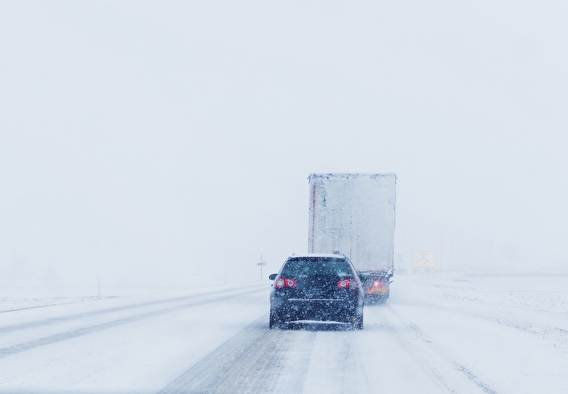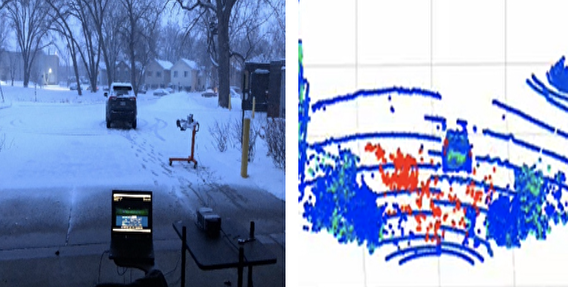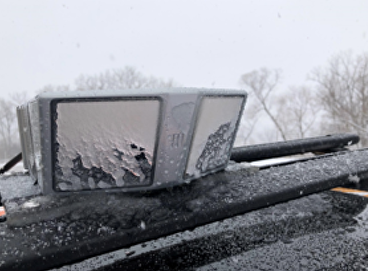
While fully automated vehicles (AVs) have not yet reached the roads, the work to get them market-ready is steadily moving forward. One of the essential technologies these vehicles rely on for safety and performance is lidar, which has traditionally experienced a loss of accuracy in bad weather.
To address this challenge, the Minnesota Department of Transportation (MnDOT) enlisted the help of U of M researchers to evaluate lidar’s capabilities in adverse weather conditions and recommend solutions to help automated vehicles succeed in any environment—even Minnesota winters.
Lidar—light detection and ranging—is a critical but relatively new component of AV technology. It uses mounted lasers to continuously scan and collect data that’s then processed to create 3-D maps of vehicles’ vicinities in real time. “While lidar works well on clear days, it can be unreliable in foggy, rainy, or snowy weather—creating a potential hazard for all road users,” says Will Northrop, professor in the Department of Mechanical Engineering and the project’s principal investigator.
To identify enhancements that will help AVs become better and safer, the researchers set out to understand lidar’s challenges and find improvements that will increase and refine the technology’s accuracy in all types of weather. They began with a literature review, then reached out to leading AV companies to ensure manufacturers could use their research results. This also allowed them to tap into the private sector’s experience and cutting-edge equipment for maximum benefit.

Next, the team tested lidar’s performance in foggy and snowy conditions. Because fog can be difficult to test in nature, the research team created a simulated environment by installing the system in the center of a fog chamber and measuring lidar’s signal and performance in dense fog conditions.
For realistic on-road testing of lidar’s performance in snowy conditions, team members installed a lidar system from Luminar Technologies Inc. on the roof of the test vehicle. They evaluated the technology while parked in an open outdoor area and while in motion in both moderate snow and a snowstorm.
“Being able to test lidar in real snow conditions was an unusual upside to Minnesota’s harsh winters,” Northrop says. “Traveling over highways and local roads in these conditions allowed for a realistic assessment of the system’s stability, speed, and precision in detecting a variety of objects and pavement markings.”

According to Northrop, the research produced several groundbreaking results. “We found that lidar technology can ‘see’ better and further in fog than we can see with a camera system or with our own eyes,” he says. “However, because snow particles are more substantial, we don’t get that same benefit.”
To address the challenges created by snow, the research team developed and tested a mathematical model to help the system recognize and eliminate snow from its collected data. In addition, they recommended hardware design changes after ice accumulation blocked the lidar’s sensors.
The team’s coordination with public- and private-sector leaders also proved valuable. “The project would not have been possible without the collaboration of Luminar Technologies and Vision System Intelligence Labs,” Northrop says. New understanding and solutions are ready for manufacturers to apply to lidar systems.
“While more research is still needed, this project shows that technology may one day be able to detect obstacles in a variety of adverse conditions better than the naked eye is able to,” says Robert Chaucierre, transportation program specialist with MnDOT’s Office of Traffic Safety, the project’s technical liaison.
See also Future of Mobility: Addressing Challenges for Autonomous Vehicles on Winter Roads.
Writer: Megan Tsai


